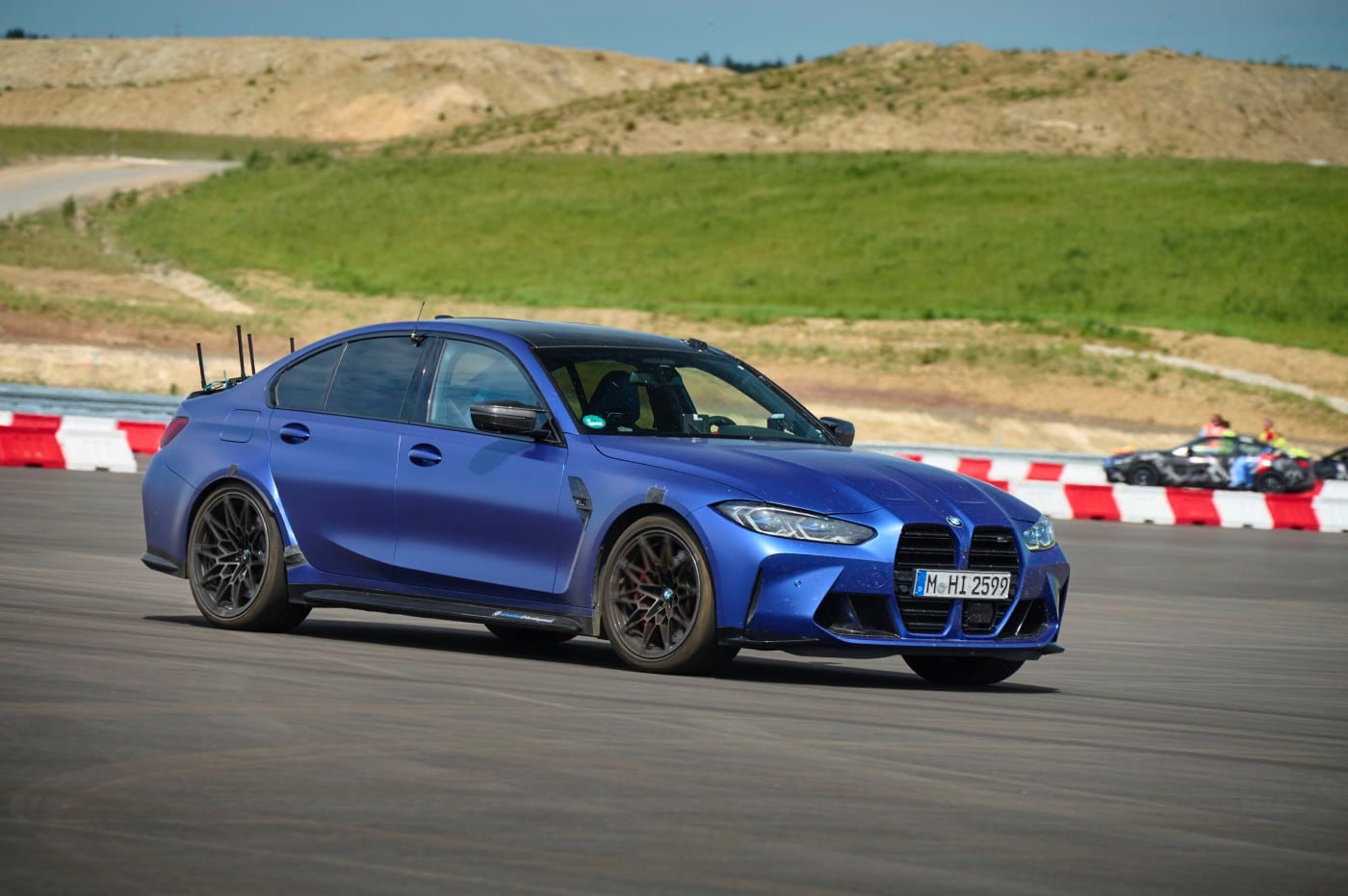When it comes to autopilot, most people think of cars that drive on roads without drivers. This is partly true, but the autopilot has another very important function – it helps to test new cars.
Before the release of cars, manufacturers reliably test them. Tests can last daily for several months or even years.
Checking cars did not pass without drivers. But with the likelihood of autopilot test drivers now may not act on some routine tests.
technology is available from many major automakers, including BMW.
Vehicles without drivers at the BMW test site in the Czech Republic
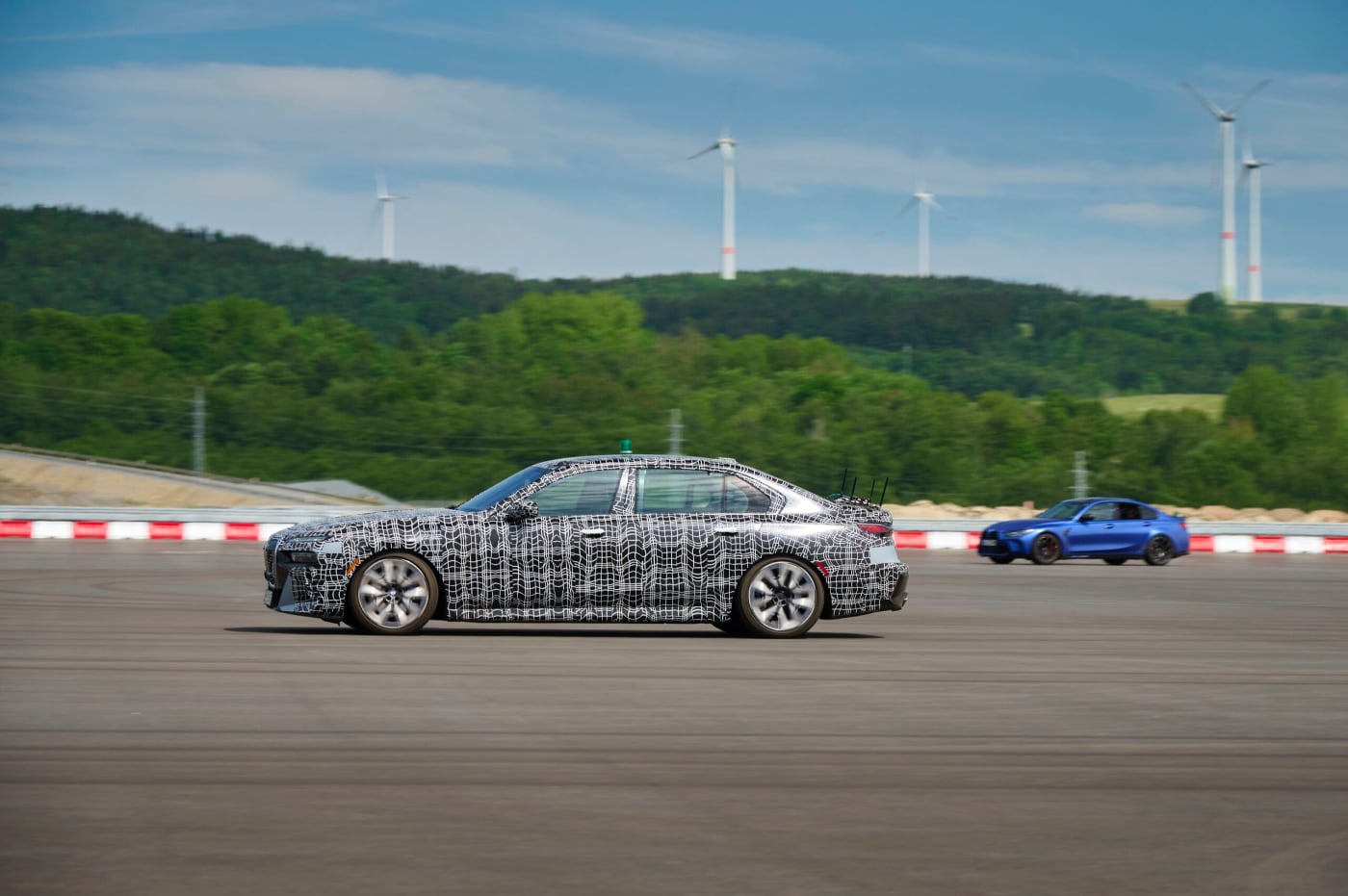
BMW i7 and i4 at the test site in the Czech Republic
The BMW test center is located in the Sokolov residence. Here, machines are taught to practice many everyday maneuvers, as well as testing the endurance of their parts.
On one of the sites of the training ground, two BMWs ride on the same route. There is not a single person in their salon. Cars are fully computer controlled.
Cars themselves press the gas, brake and turn the steering wheel. Random application of the pedal occurs every time with the same effort.
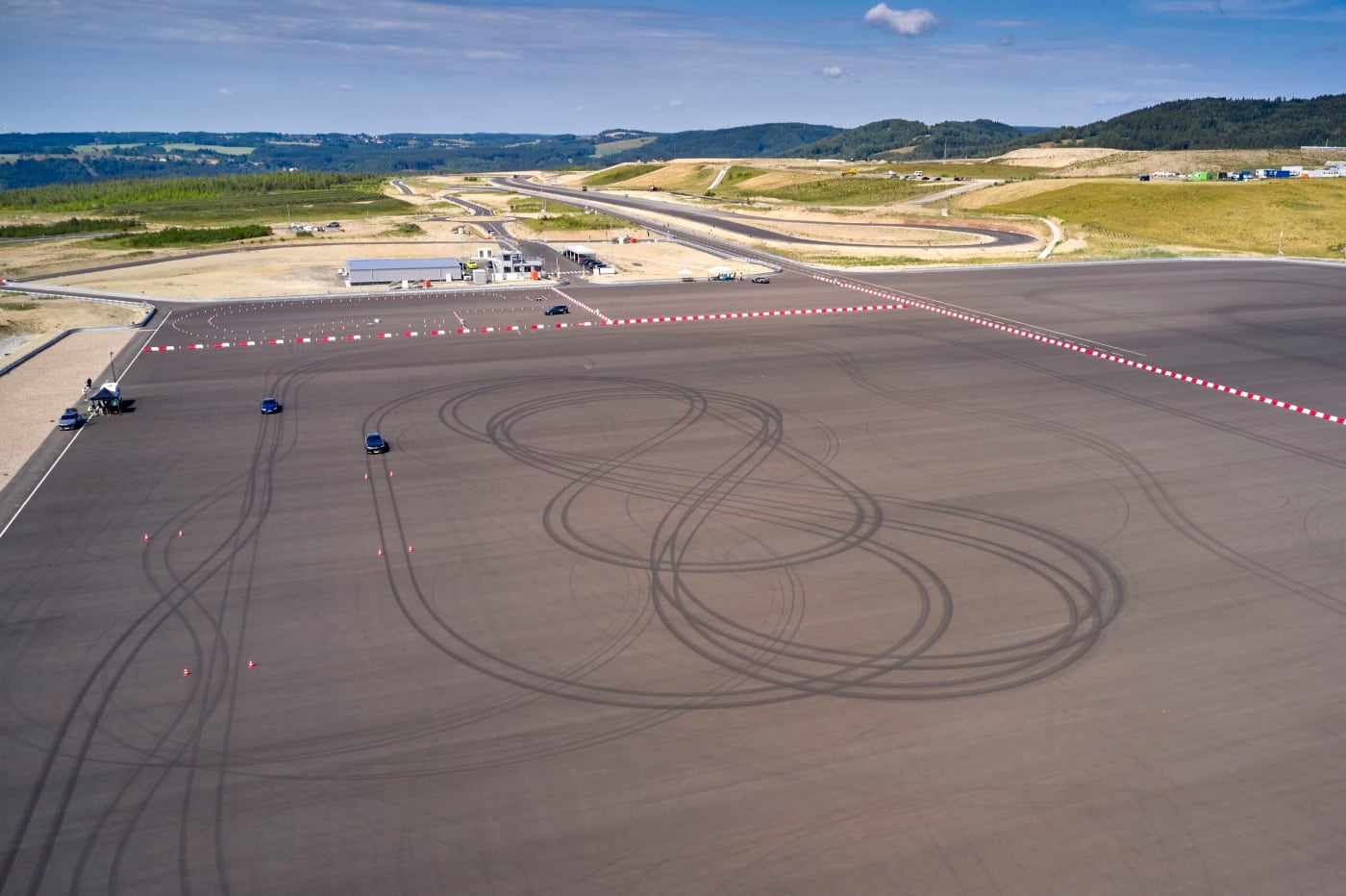
“It’s boring for human drivers,” said Philipp Ludwig, head of BMW’s self-driving car development department. When a person sells the same sample, the quality of the reproduction of the work causes interest or fatigue. The autopilot can do this check all day long.
According to Ludwig, unmanned vehicles have passed 70,000 kilometers of sea trials over the past few years. These are ordinary road tests, and checking the brake system, light signals, as well as tests on high-speed autobahns at speeds up to 200 km / h. All tests are carried out on a closed test site, which simulates a city street and highway.
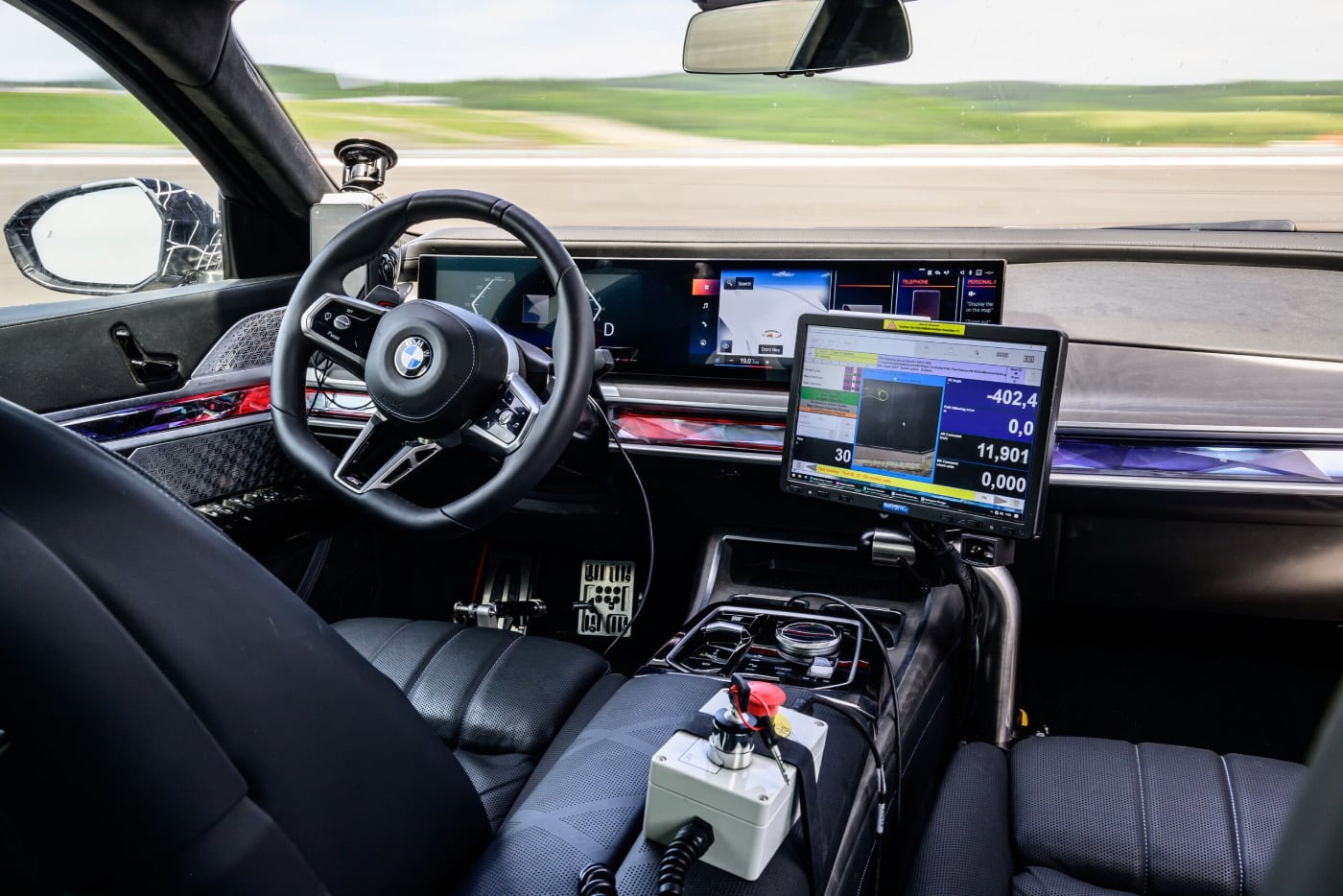
The interior of the BMW i7 tests is not like the production version
The use of self-driving cars allows BMW to obtain accurate data on the operation of all systems, such as brakes. A car can move at the same speed and apply the brakes with the same force, which a person cannot do.
As a result, the data is much more accurate. Use microphones and temperature sensors to detect brake squeal. They also transfer the heat of the brake pads.
Only natural conditions affect the readings of instruments and testssuch as weather, tire wear and asphalt temperature. The human factor is completely excluded. All data is immediately sent to the BMW headquarters in Munich.
To make sure that the brake tests pass without errors, the cars change the trajectory a little. Thus, traces of rubber on the road are in no way characteristic of braking cars.
BMW can add autopilot to any car in one day
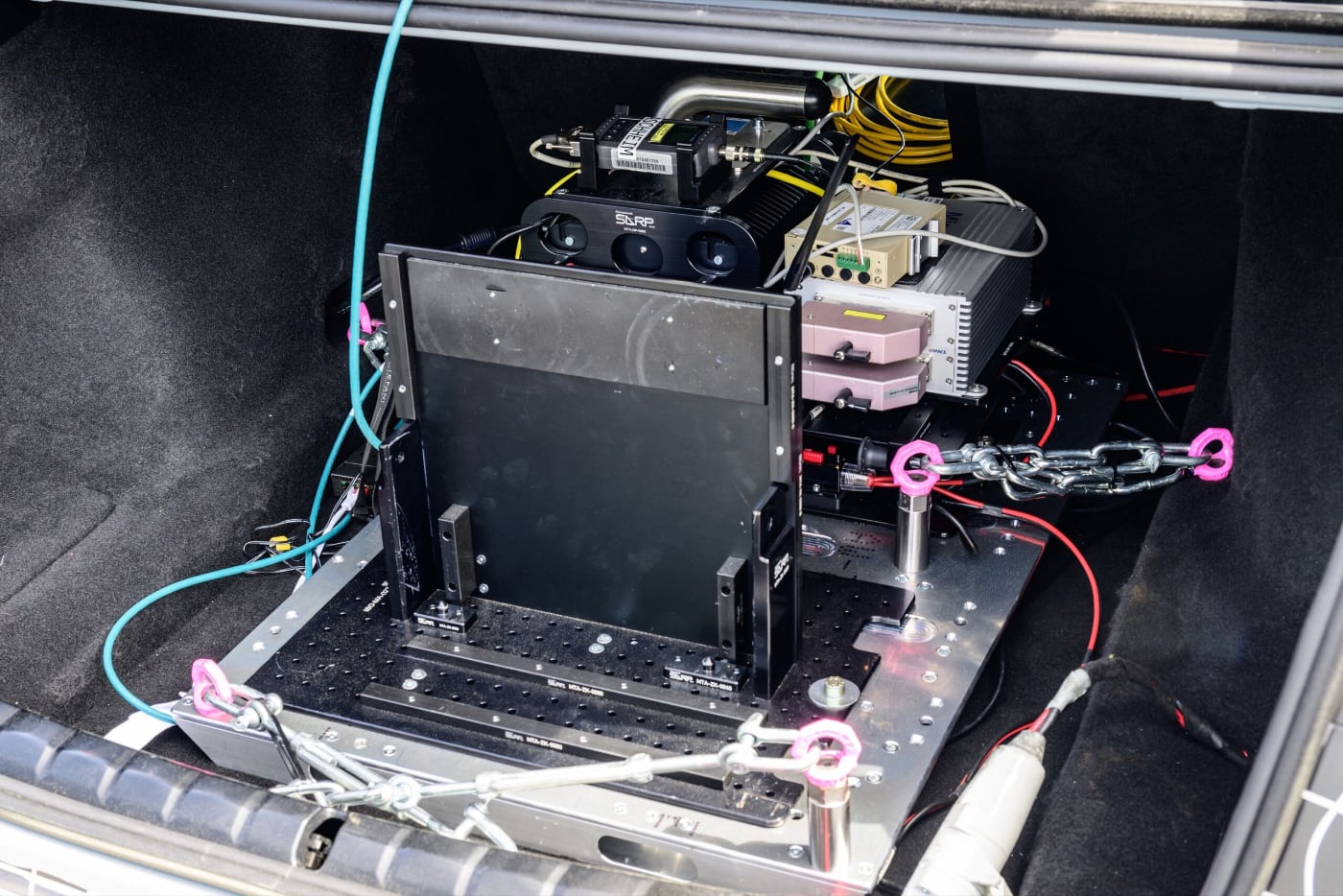
Ludwig noted that it is very difficult for people to achieve the testing pace.
The fact is that this is not just 10 tests or 10 days, but 10 thousand tests. So we need more drivers in more cars.
Philipp Ludwig, Head of Self-Driving Vehicles at BMW
Now one person can match five cars, and they all test different elements. In 80-90% of cases, engineers do not even check the machines, they track all readings on a computer.
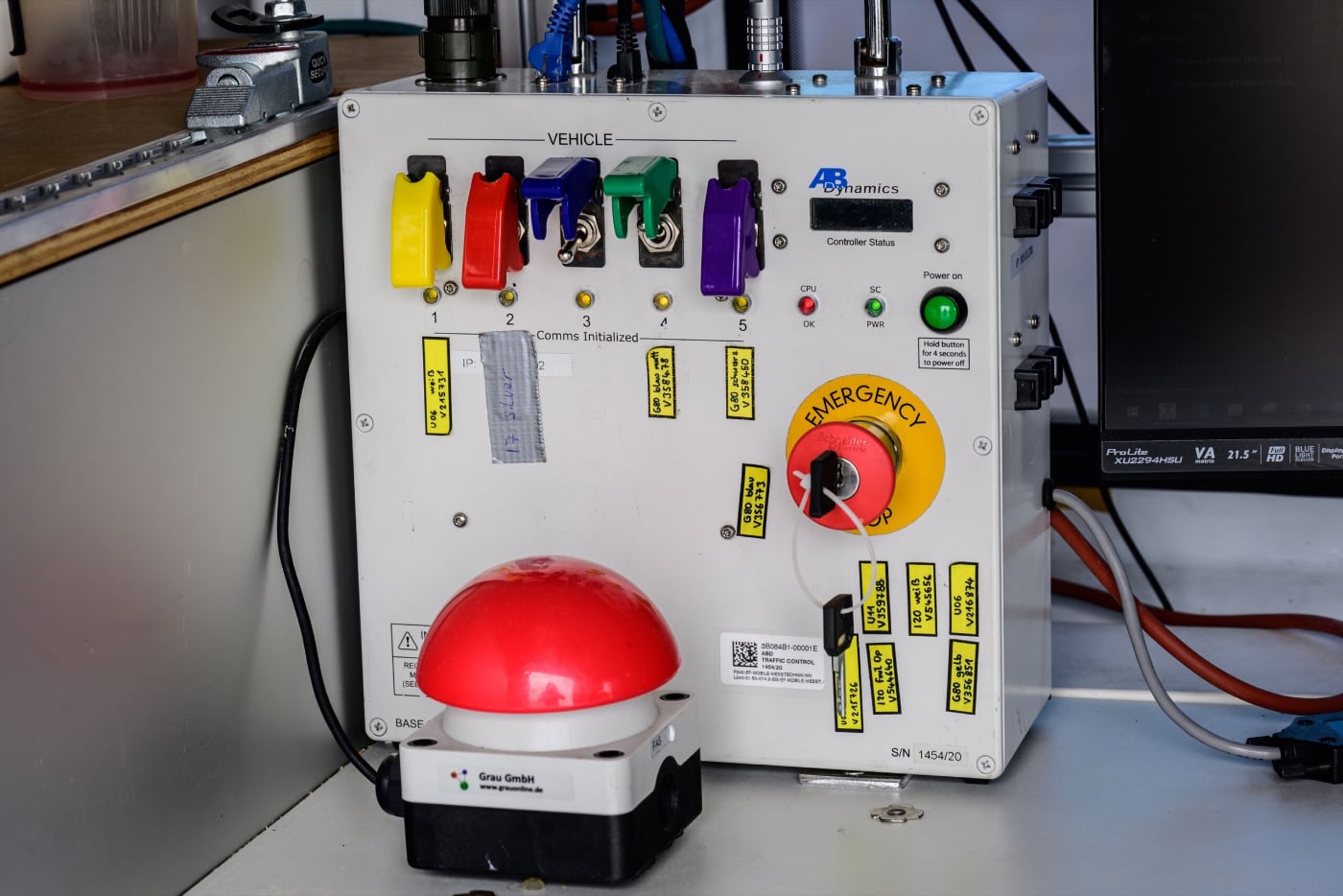
Before the invention of the autopilot, BMW engineers found mechanical robots in cars that controlled the gearbox, pedals and steering wheel. The potential installations were very large and inconvenient, and their installation could take several days.
Now BMW can add and calibrate Autopilot in any car in one day.
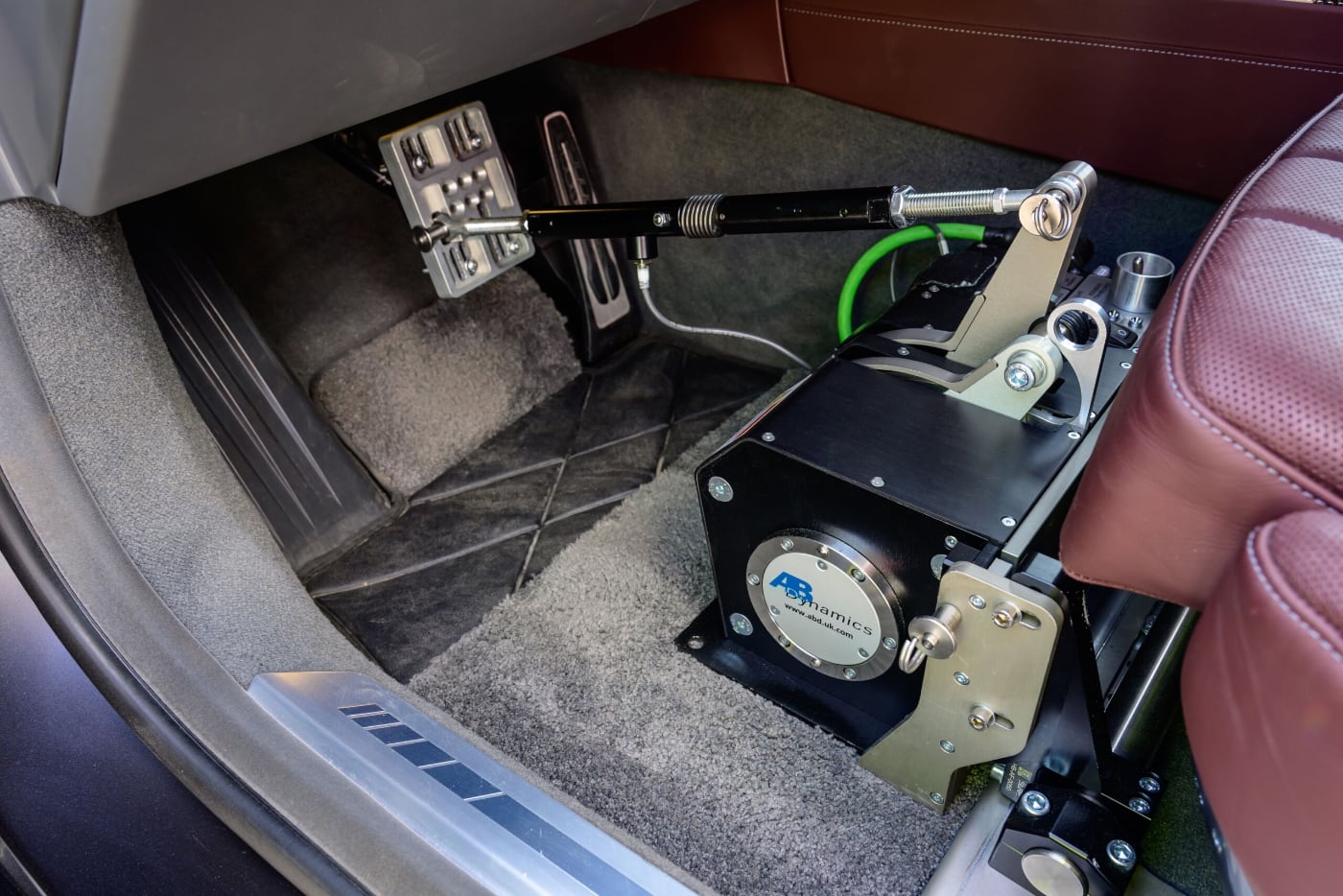
However, mechanical robots are not completely disappearing. The semi-car still has an automatic mechanical brake if the car is powered or plugged in.
Also, an emergency stop occurs if the car deviates from its route by more than 1.5 meters.
BMW Autopilot can remotely park
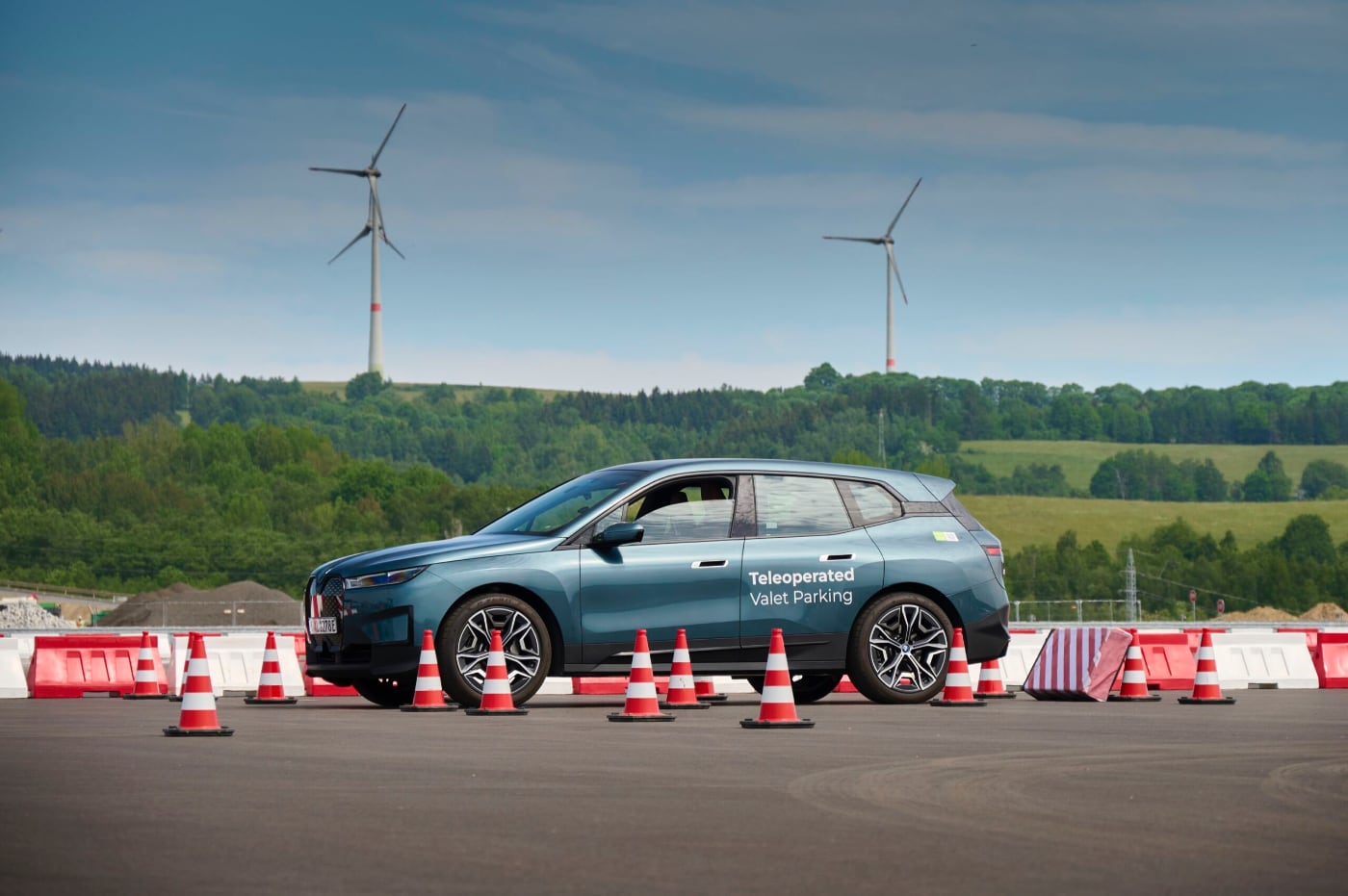
Test BMW iX for remote parking
Another non-obvious but useful system is automatic parking. The idea is that the car itself will look for a place and park without a person inside.
This can be useful in large centers with large parking lots. Instead of driving around the parking lot and looking for a place, and walking out of the building, you can drive up to the entrance, go about your business, and the car itself will go to look for a place and park.
The feature is part of autopilot ownership and therefore cannot be registered on public roads yet. But this does not prevent BMW from testing it at its test site.
The parking process is like a computer game
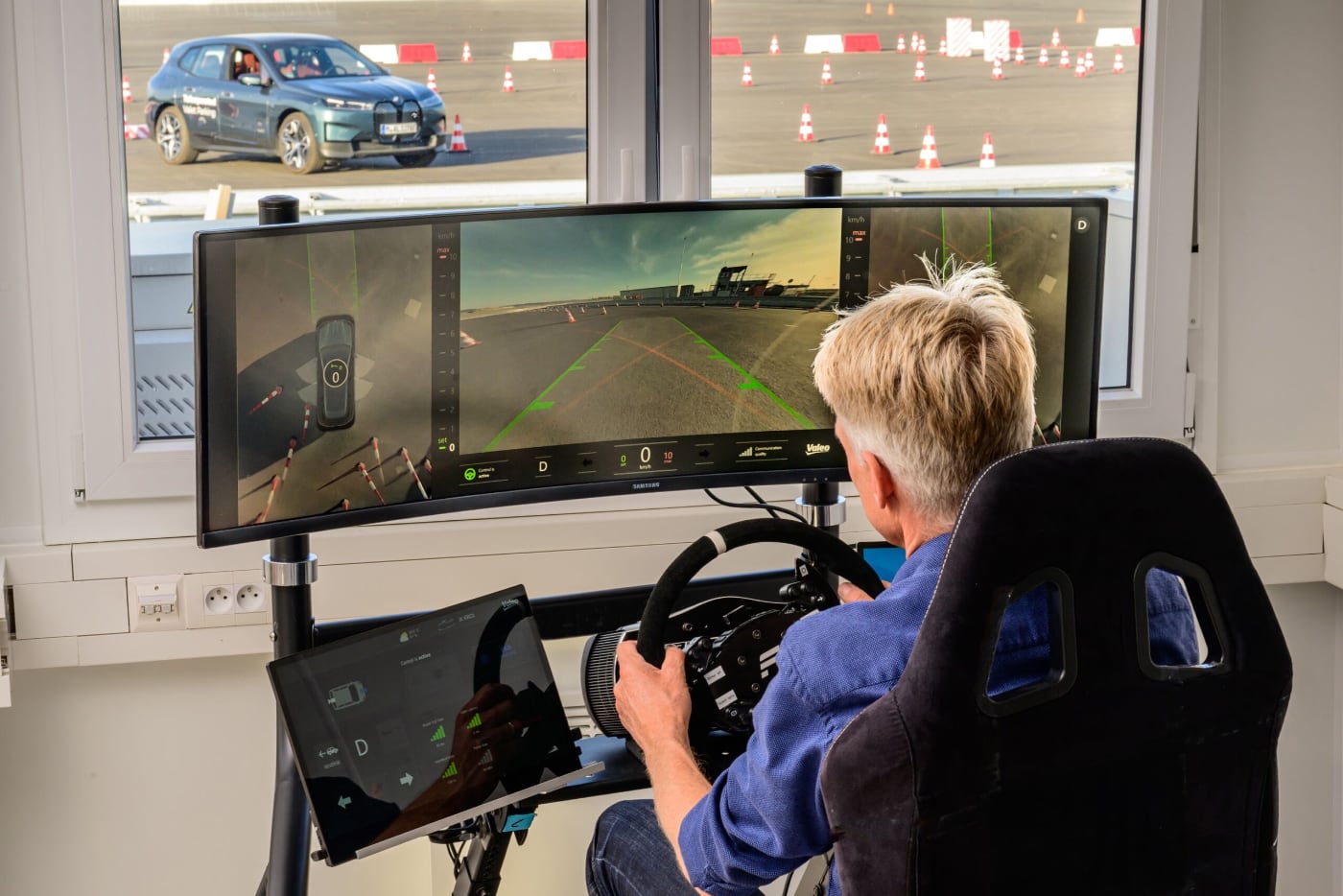
There is one BMW iX at the test site, which is connected via 4G to a computer located about 100 meters from the car.
This BMW project is collaborating with Valeo. BMW is responsible for the car and autopilot, and Valeo is responsible for the parking software.
Workstation of the operator of a rotary game cabin for computer races. In the center is a large curved monitor, divided into three parts. In the middle you can see the image from the front or rear camera (depending on the selected transmission), and on the sides – the image from above. There is also another screen that displays auxiliary information. Use the steering wheel and pedals to steer the machine.
The only, but the main difference from the game booths is that not games are visible on the screen, but real cars and neighborhoods.
The BMW iX, which sits outside and is connected to a computer, is no different from the production version. She has the same set of cameras and lidars.
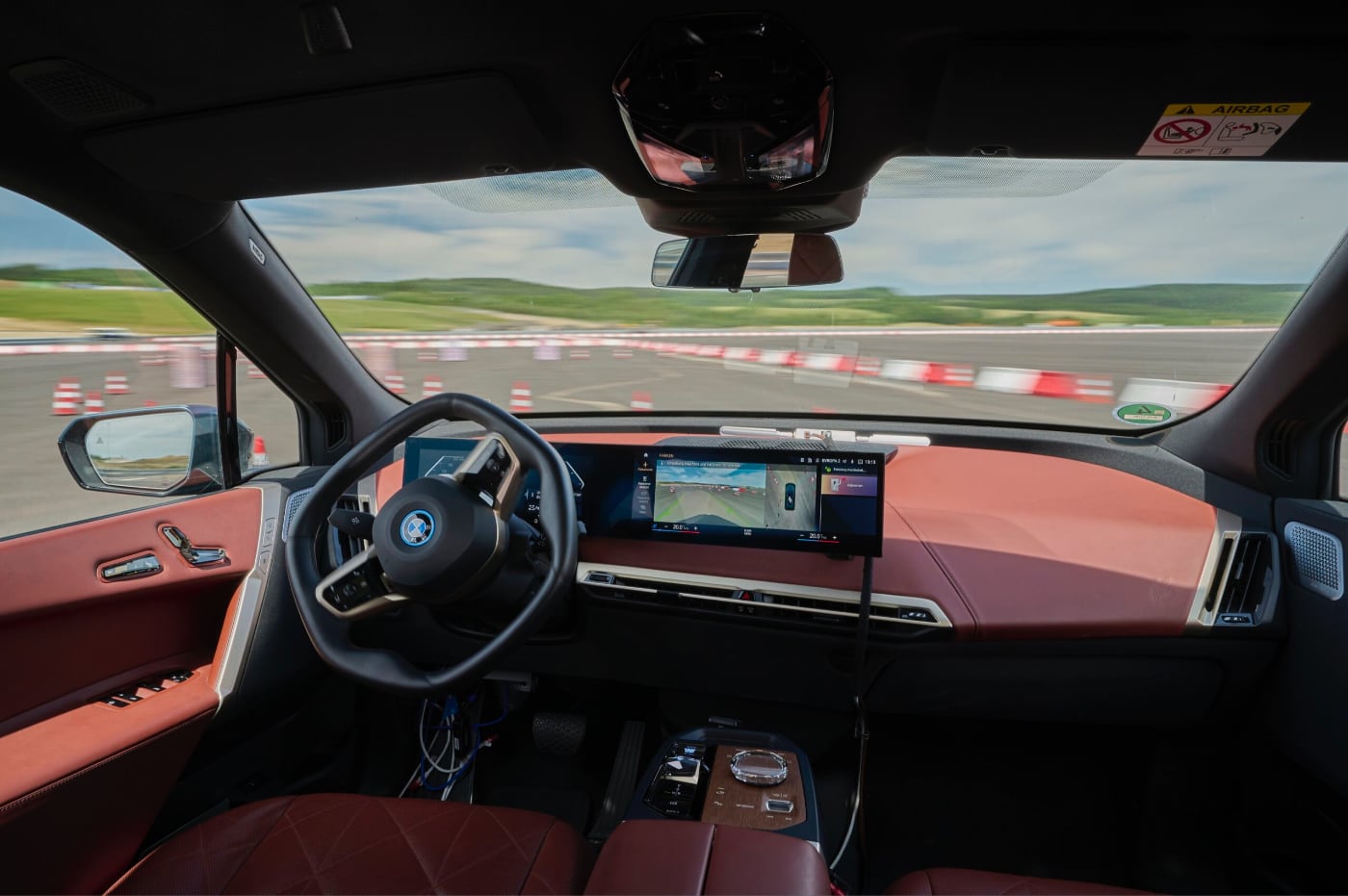
There is no one inside the BMW iX during parking
The brake pedal, located under the computer, must be applied once to engage the parking system and change gear. It is no longer used for anything.
In Dual Active Pedal mode, throttle. If you release it, the car starts to slow down by itself until it comes to a complete stop.
the maximum speed of the car in this protocol is 10 km/h. The computer of the unusual speedometer displays an indicator of the requested and observed speed.
For example, the operator can use the accelerator pedal to accelerate to 8 km/h. This is the requested speed that determines the content of the color. As you approach it, the value of the speed, highlighted in white, changes. The idea is to have an idea of the acceleration.

Slow speed and multiple angles do not make it easy to park for the first time. Despite the low speed, on the screen it seems that the car is going fast.
The operator must park in front or behind between the cones. The distance for the car is obtained. In real life, instead of cones, there may be walls, cars, shopping carts, or any other room that can interfere with parking.
Mercedes-Benz and BMW plan to implement automatic parking without autopilot
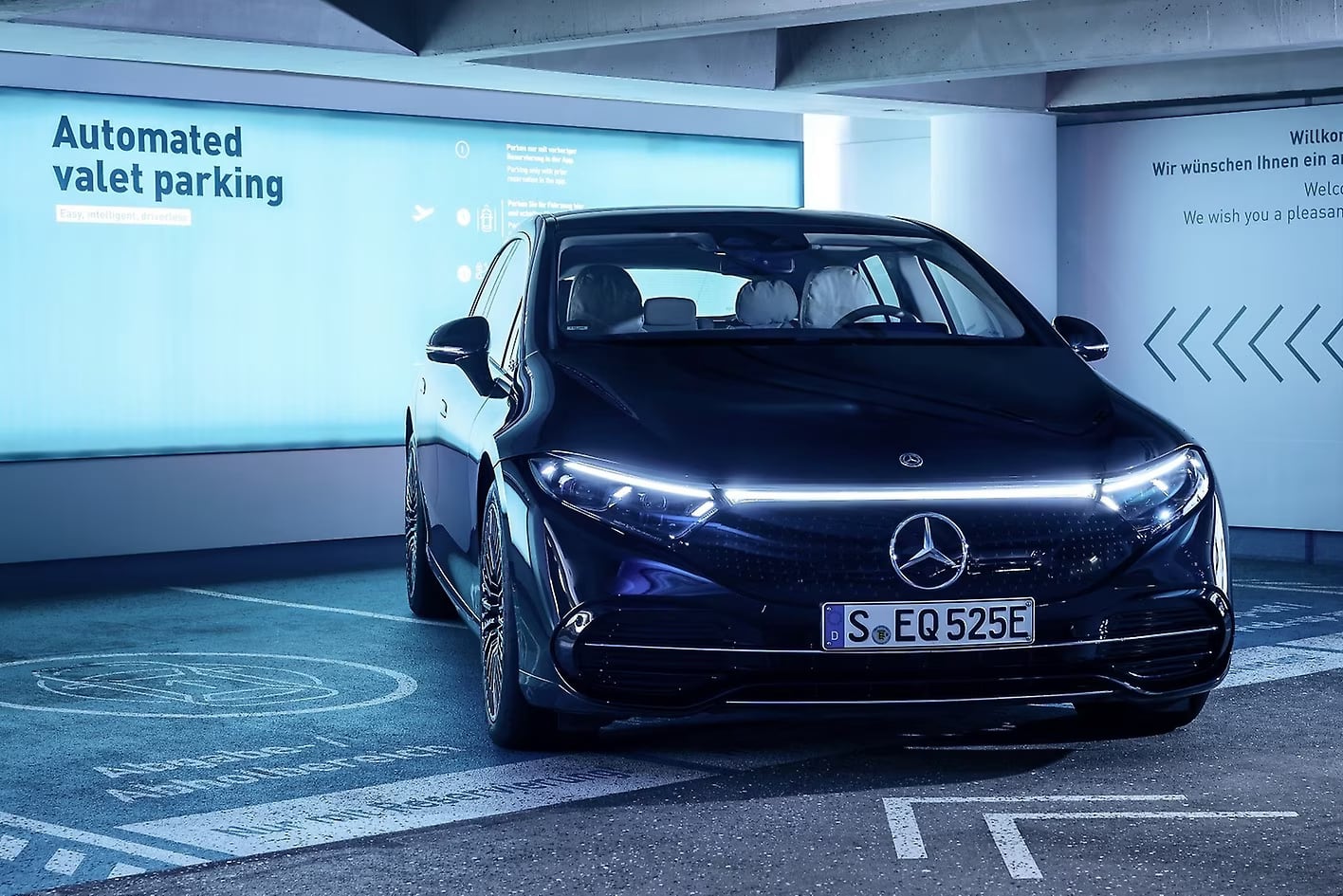
There are two approaches to parking. The first is to make it part of a delayed autopilot that does not require a driver. But current cars and laws are not yet ready for this.
The second way is to create a full-fledged infrastructure – a parking lot with sensors that cars can use to navigate. In such cases, a full-fledged autopilot is not needed, because the function will only work in closed parking lots for autonomous cars.
First, Mercedes-Benz and Bosch plan to implement such a system, and then BMW will connect to them. The current plan calls for 20 self-driving car parks in Europe.
Other companies may also participate in the experiment, because all technologies are standardized. Automakers only need the right hardware and software.
Source: Iphones RU
I am a professional journalist and content creator with extensive experience writing for news websites. I currently work as an author at Gadget Onus, where I specialize in covering hot news topics. My written pieces have been published on some of the biggest media outlets around the world, including The Guardian and BBC News.






